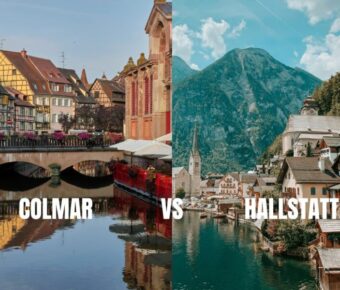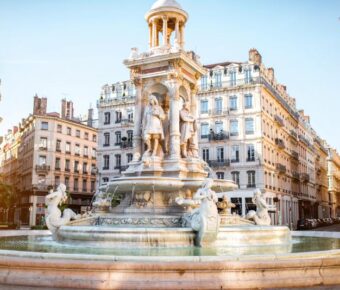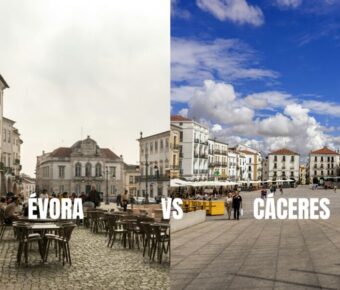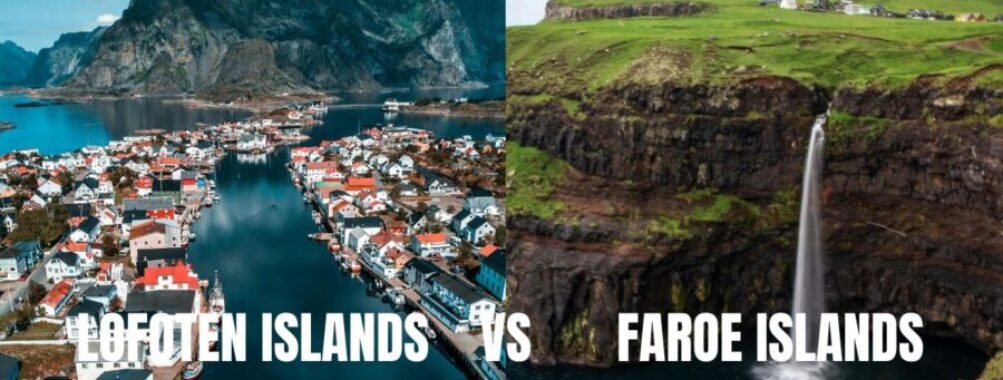
Lofoten Islands vs Faroe Islands: Ultimate Travel Comparison & Insider Tips
Trying to pick between Norway’s Lofoten Islands and the Faroe Islands? Yeah, good luck—both are wild, remote, and absolutely unforgettable, but honestly, they’re worlds apart.
If you crave those jaw-dropping peaks shooting straight out of the sea, easy transport, and the hope of clear skies, Lofoten usually comes out on top. But maybe you’re into raw isolation, puffin colonies, and that ever-changing, moody weather—then the Faroes might just steal your heart.
I’ve wandered around both, and the vibe shift is real. Lofoten’s got those cozy fishing cabins, lively little towns, and a strong outdoor culture where everyone seems to be hiking, kayaking, or chasing the Northern Lights. The Faroes, though? They’re quieter, almost secretive, with landscapes that kind of make you forget people even live there.
Key Takeaways
- Lofoten? Dramatic mountains, more daylight, and easier to get around.
- Faroe Islands? More remote, unique wildlife, and way fewer crowds.
- It really comes down to whether you want accessibility or to truly get away from it all.
Table of Contents
- Key Differences Between Lofoten Islands and Faroe Islands
- Geographical Location and Accessibility
- Cultural Distinctions and Heritage
- Climate and Best Time to Visit
- Natural Landscapes and Scenery
- Iconic Mountains and Fjords
- Dramatic Coastlines and Sea Cliffs
- Unique Lakes and Waterfalls
- Outdoor Activities and Adventure Experiences
- Hiking and Trekking Routes
- Wildlife Watching Opportunities
- Kayaking and Water Sports
- Local Culture and Authentic Experiences
- Traditional Villages and Architecture
- Culinary Specialties and Local Cuisine
- Travel Logistics and Practical Tips
- Getting There and Around
- Accommodation Options
- Budget Considerations
- Which Destination is Right for You?
- Ideal Traveler Profiles
- Seasonal Highlights and Special Events
- Frequently Asked Questions
- What unique experiences do the Lofoten Islands offer compared to the Faroe Islands?
- How do the climates of the Lofoten and Faroe Islands differ, and what implications does this have for travel planning?
- Can you highlight the cultural differences travelers should expect when visiting the Lofoten Islands versus the Faroe Islands?
- What are the key considerations for wildlife enthusiasts when choosing between the Lofoten and Faroe Islands?
- Could you elaborate on the accessibility and transportation options when traveling to the Lofoten Islands versus the Faroe Islands?
- What are the culinary experiences that distinguish the Lofoten Islands from the Faroe Islands?
- Book Your Dream Experience
- More Travel Guides
Key Differences Between Lofoten Islands and Faroe Islands
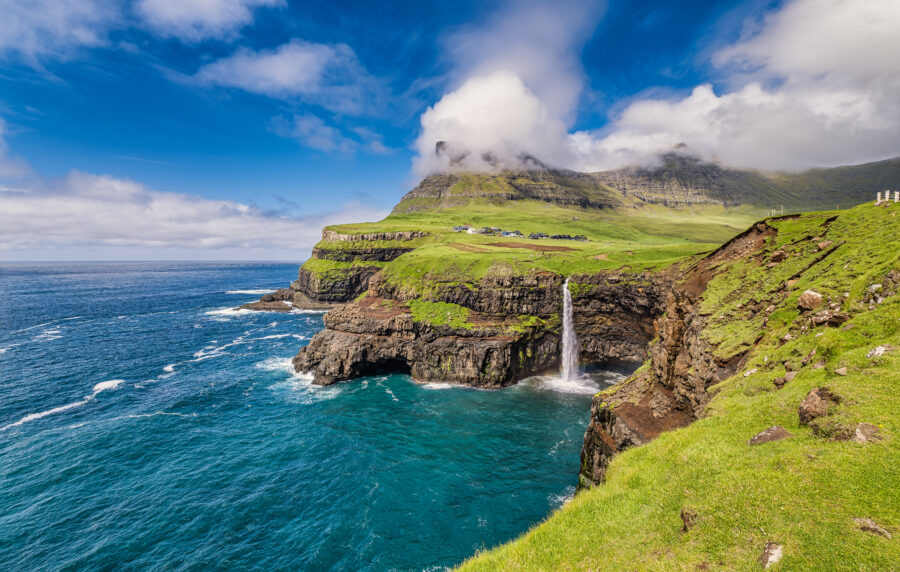
Lofoten and the Faroe Islands both bring the wild beauty, but how you get there, the local culture, and the weather—all of that can totally shape your trip. What matters most to you?
Geographical Location and Accessibility
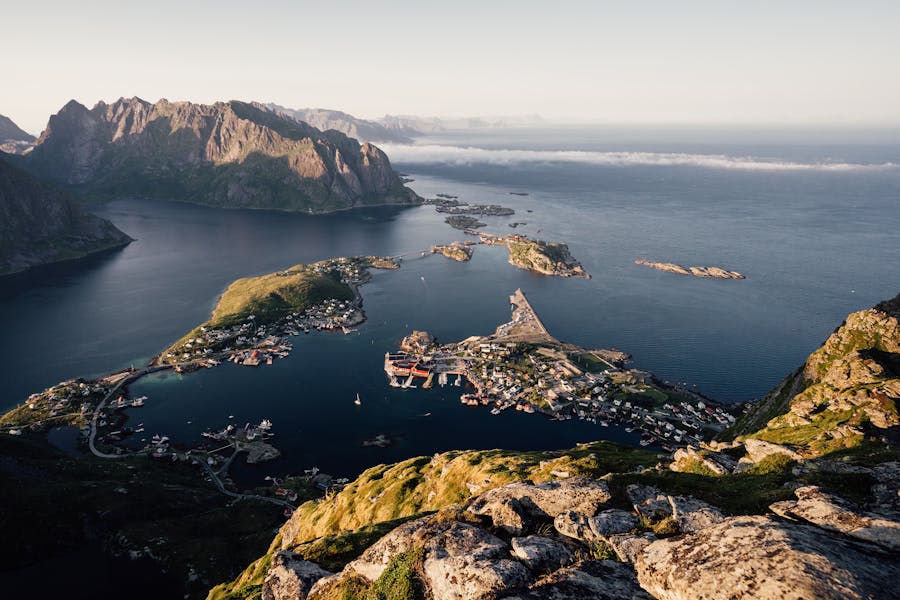
Lofoten sits above the Arctic Circle in northern Norway. Bridges and tunnels connect the islands, so once you arrive, driving around is a breeze.
You can fly into Leknes or Svolvær from Oslo or Bodø, or hop on the ferry from Bodø. I’ve done that ferry—long ride, but the fjord views? Totally worth it.
The Faroe Islands, meanwhile, are squeezed between Iceland and Scotland. They feel way more remote. Most people fly in from Copenhagen with Atlantic Airways, though there are some seasonal flights from Bergen.
Once you land, you’ll notice there aren’t as many roads, and a few islands are only reachable by ferry or even helicopter. Travel moves slower, but honestly, that’s half the adventure.
If you want easy logistics and a solid infrastructure, Lofoten is your friend. But if you’re chasing that wild, off-the-grid feeling, the Faroes deliver.
Cultural Distinctions and Heritage
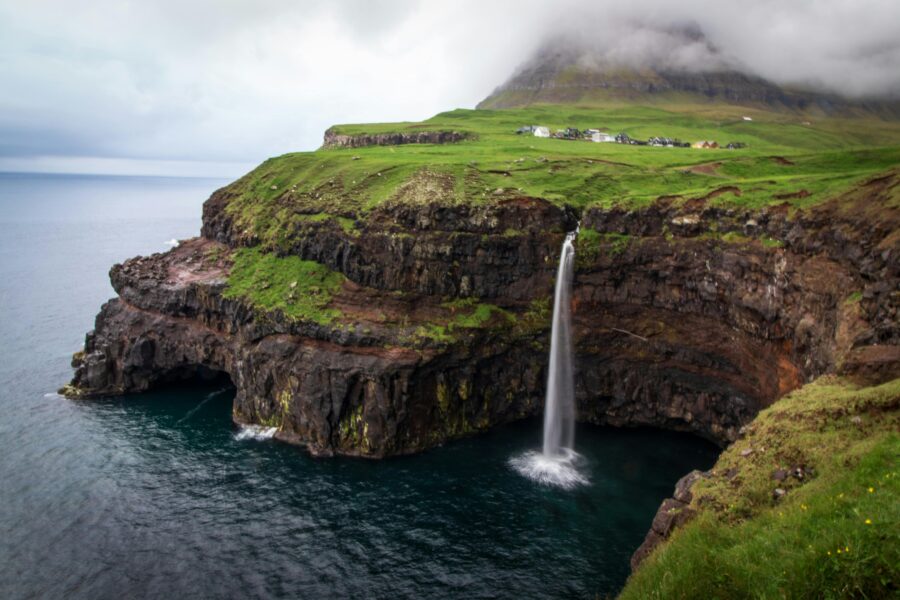
Lofoten’s Viking roots run deep. You can swing by the Lofotr Viking Museum and climb aboard a replica Viking ship.
Fishing is everywhere—literally, you’ll see endless racks of drying stockfish. The smell? Intense, but it’s just part of the experience.
The Faroe Islands have this cool blend of Scandinavian and Celtic vibes. Faroese, the local language, is closer to Old Norse, but you’ll hear Danish too.
Villages feel tight-knit, with grass-roofed houses and tiny pubs where locals gather. When I visited, the Faroese seemed shy at first, but once you chat, they’re some of the warmest people you’ll meet.
Both islands take pride in their heritage. The Faroes feel more traditional and insulated, while Lofoten’s a bit more international—probably because more travelers pass through.
Climate and Best Time to Visit
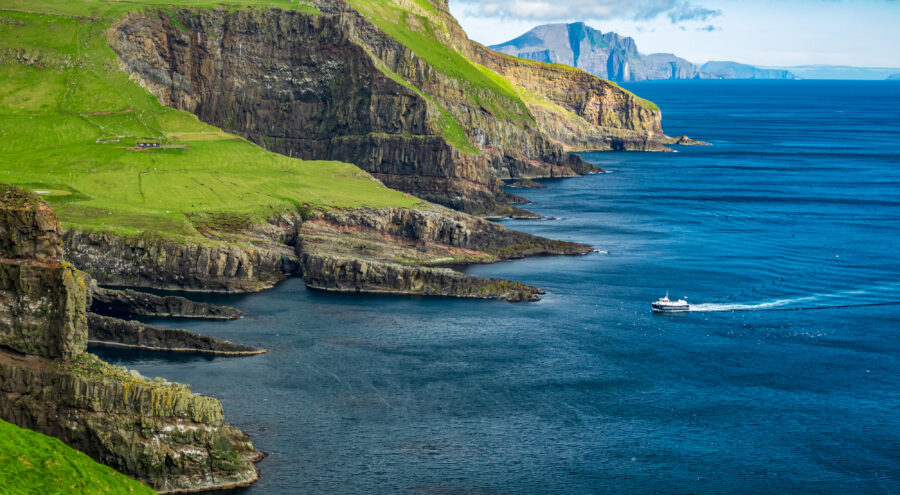
Lofoten gets a boost from the Gulf Stream, so the weather’s milder than you’d expect for somewhere so far north. Winters are cold but not brutal, and summers are cool with those endless daylight hours.
June and July bring the midnight sun. By late August, nights return and the northern lights start making appearances.
The Faroe Islands? Rain and fog are constant companions. Locals joke you’ll get all four seasons in a day—and they’re not kidding.
When I visited in early autumn, I got sun, then a downpour, then mist, all before lunch. You really need waterproof gear out here.
If you want a mix of hiking, fishing villages, and a shot at the aurora, Lofoten’s easier. If birdwatching and rugged coastlines call your name—and you don’t mind unpredictable weather—the Faroes are magic. The climate might just tip the scales for you.
Natural Landscapes and Scenery
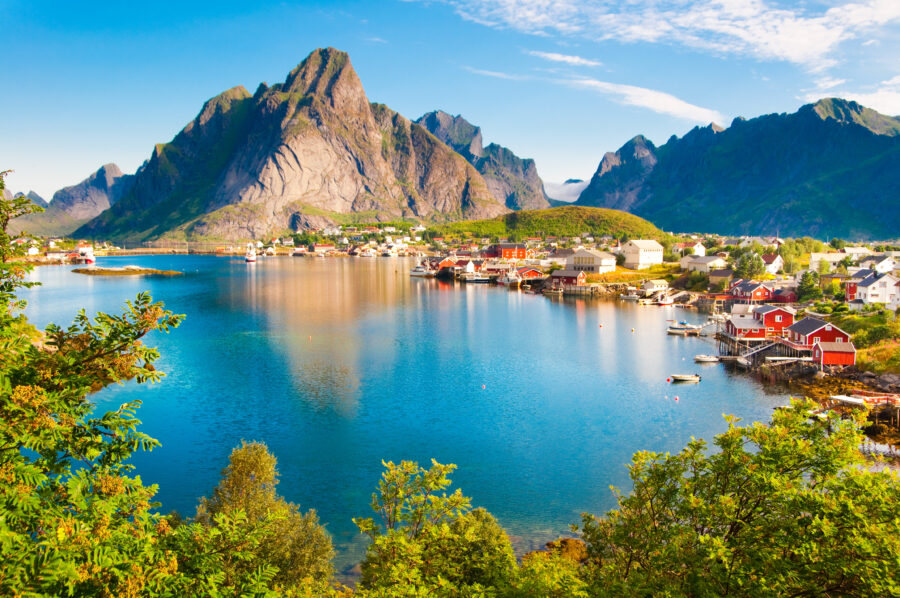
Lofoten and the Faroe Islands both hit you with raw, untamed beauty shaped by the North Atlantic. You’ll see towering peaks, wild cliffs, and secret valleys, but the character of each place is totally its own.
Iconic Mountains and Fjords
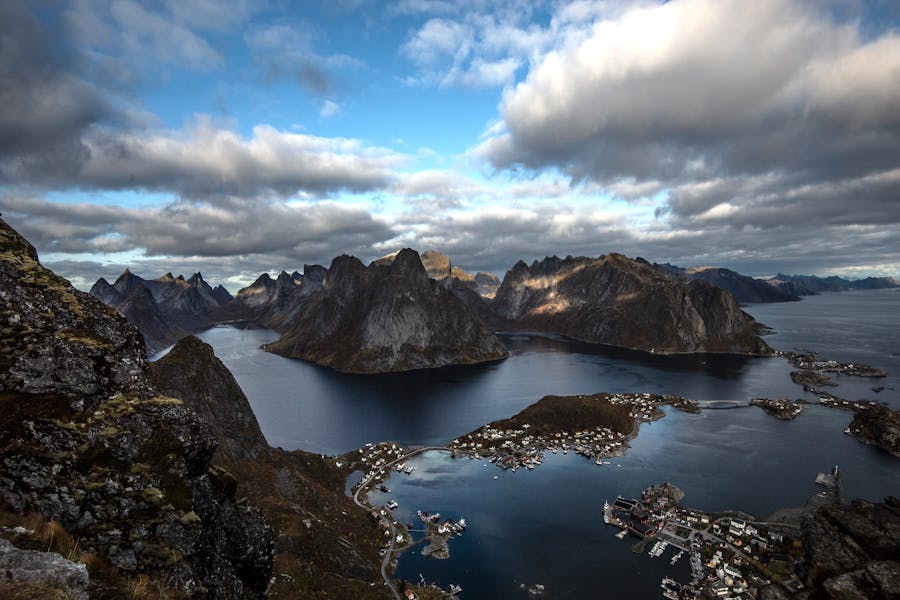
In Lofoten, mountains shoot almost straight out of the sea. The granite peaks around Reine and Moskenesøy get photographed constantly, and I get why—it’s unreal. The E10 highway winds past fjords that reflect those jagged ridges like a mirror.
The Faroe Islands’ mountains are softer, rounder, and blanketed in grass. They’re less dramatic at first glance, but they’re easier to hike. Fjords cut deep into the islands, and you’ll stumble on colorful villages tucked right along the water.
If you’re chasing sheer drama, Lofoten’s your place. If you’re after gentler hikes and a quieter vibe, the Faroe Islands give you that sea-and-mountain balance without the crowds.
Dramatic Coastlines and Sea Cliffs
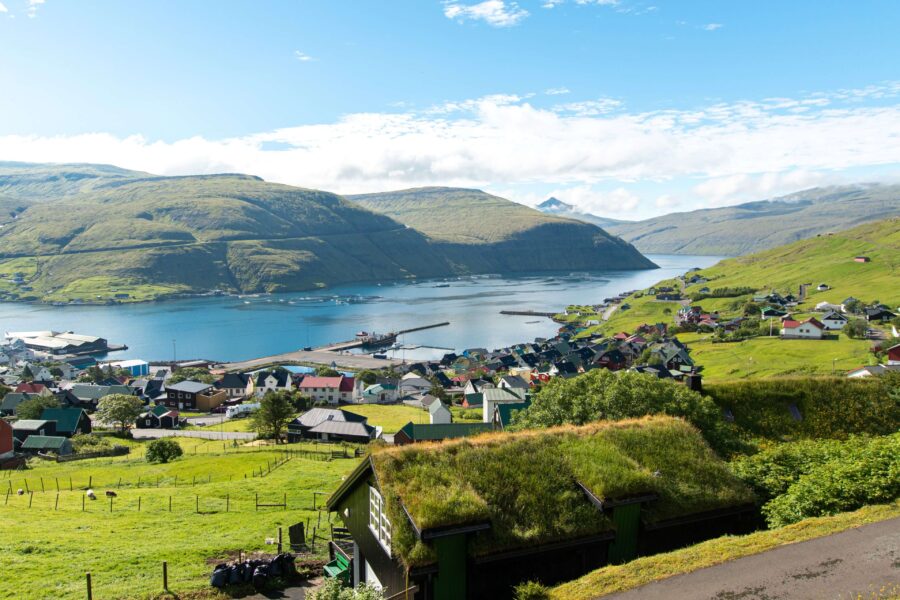
Coastlines here? Couldn’t be more different. Lofoten has sandy beaches like Haukland and Unstad that look almost tropical…until you dip your toes in and remember you’re in the Arctic. The combo of white sand, turquoise water, and black rock is something else.
The Faroe Islands lean hard into cliffs. Places like Vestmanna and the sea stacks Risin and Kellingin are must-sees.
The cliffs are massive, and if you’re into birds, you’ll spot puffins and guillemots nesting on the ledges. When the Atlantic waves crash into those rocks, it’s wild.
I once hopped on a boat tour under the Faroese cliffs, and honestly, you feel tiny. In Lofoten, you’re usually standing on a beach looking out; in the Faroes, you’re craning your neck up at cliffs that never seem to end.
Unique Lakes and Waterfalls

Water is everywhere in both archipelagos. In Lofoten, you’ll come across small mountain lakes on hikes, often framed by those jagged peaks.
They’re not huge, but the setting? Unreal. Sometimes you can see saltwater and freshwater in a single glance.
The Faroe Islands are famous for waterfalls that plunge into the ocean. Múlafossur, in Gásadalur, drops straight into the sea—you won’t forget it. There’s also Sørvágsvatn, a lake that sits above the ocean and creates this wild optical illusion if you stand in the right spot.
The Faroes are all about waterfalls crashing into the Atlantic; Lofoten is more about quiet alpine lakes tucked into mountain bowls. Both are gorgeous, but it depends on whether you love the sound of rushing water or the peace of still lakes.
Outdoor Activities and Adventure Experiences
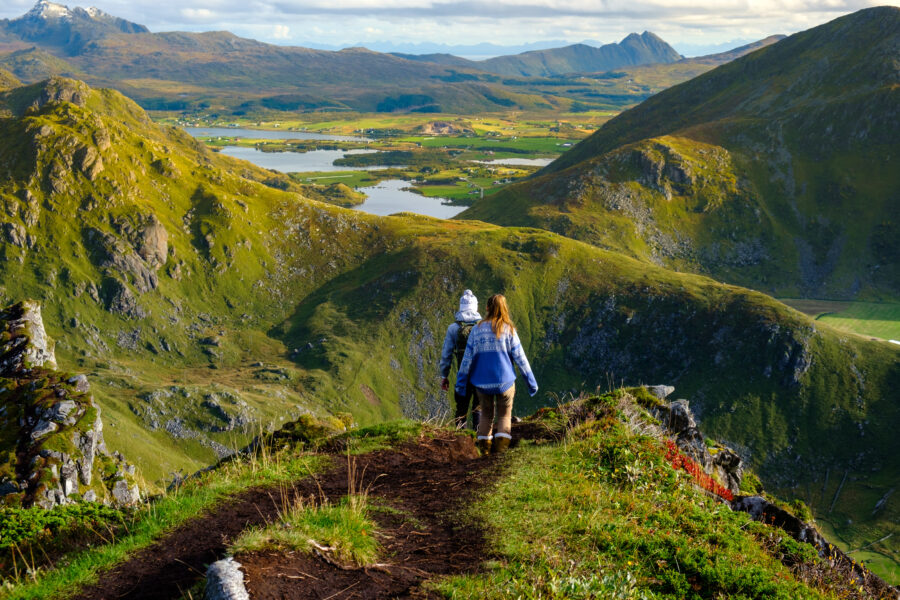
Both Lofoten and the Faroe Islands give you easy access to rugged landscapes, cold seas, and more fresh air than you’ll know what to do with. Dramatic peaks, wild birds, and unique ways to get out on the water—whether you’re into gentle paddling or braving the open ocean.
Hiking and Trekking Routes
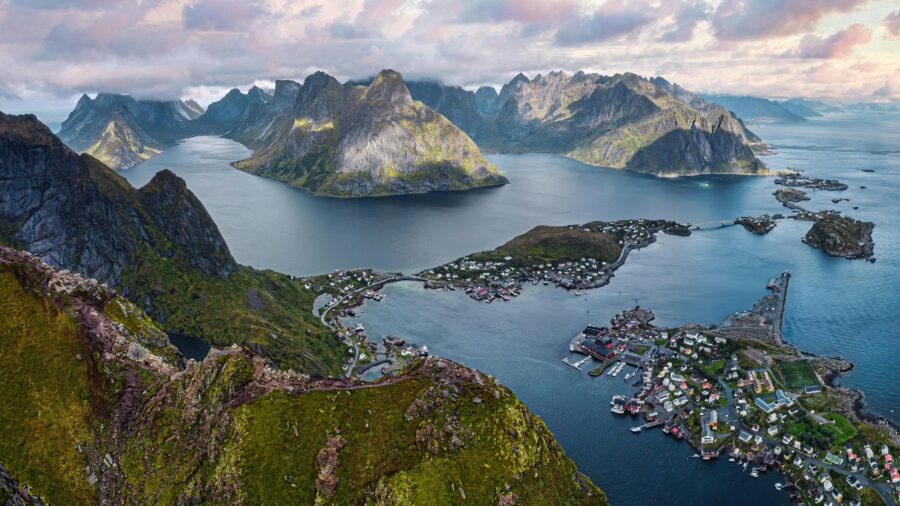
Love hiking? You’re in luck, but each spot offers something different. Lofoten’s famous for sharp peaks that rise right out of the sea. Trails like Reinebringen or Ryten will leave you breathless—in every sense. Most hikes are short but steep, so bring good boots and some grit.
The Faroe Islands feel more remote. Trails cross open grasslands, cliffs, and tiny villages. Walking to Drangarnir sea arch or hiking above Lake Sørvágsvatn gives you views you’ll talk about for years.
The terrain isn’t as vertical as Lofoten, but the weather can be much harsher. Waterproof everything is a must.
If you like to make the most of your trip, book a guided hiking trip before you go. Saves you from wasting precious adventure time figuring out where to start.
Wildlife Watching Opportunities
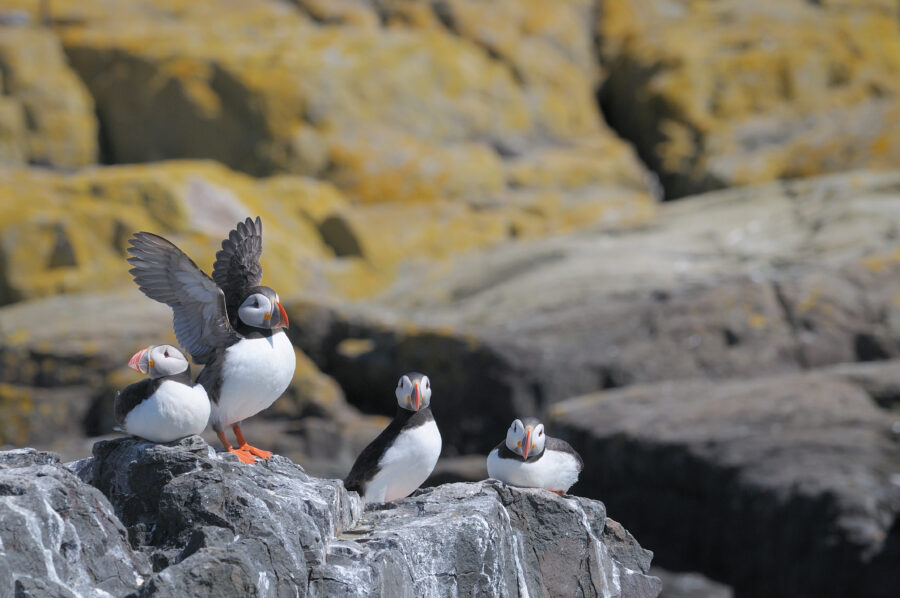
Wildlife really pops in the Faroe Islands. Puffins, guillemots, and storm petrels nest on the cliffs, and boat tours to Vestmanna or Mykines get you up close to the action. And sheep—so many sheep, more than people by far.
Lofoten’s wildlife is all about the sea. Orcas and sea eagles show up often, especially in winter when herring fill the fjords. Seals hang out on rocks, and Arctic terns dart overhead.
Patience pays off in both places. Pack binoculars and layers—most of the best spots are windy and exposed. If you’d rather someone else do the planning, wildlife tours with local guides are a solid bet.
Kayaking and Water Sports
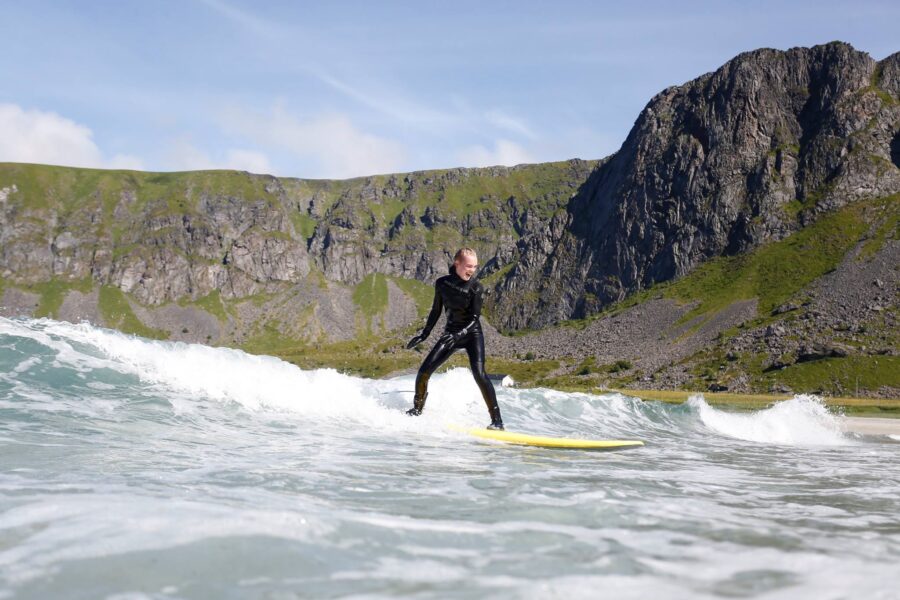
Kayaking works in both archipelagos, but the vibe is totally different. In Lofoten, you paddle calm fjords surrounded by jagged peaks. Some tours even let you combine kayaking with fishing, a nod to the islands’ roots.
The Faroe Islands’ kayaking feels wilder. The coast is packed with sea caves, arches, and cliffs that shoot up from the ocean.
It’s less sheltered than Lofoten, so conditions can flip in a heartbeat. Most people go with a guide—smart move, especially if you’re new to cold Atlantic waters.
If you want more adrenaline, Lofoten’s got Arctic surfing at Unstad. The Faroes lean toward boat tours and rib rides into sea caves. Either way, the water is freezing, so you’ll need a wetsuit or drysuit—no way around it.
Local Culture and Authentic Experiences

Step into Lofoten or the Faroe Islands, and you’ll feel how closely culture ties to the land and sea. What really sticks with me are the small fishing communities, traditional homes, and food that’s still shaped by old-school preservation and local ingredients.
Traditional Villages and Architecture
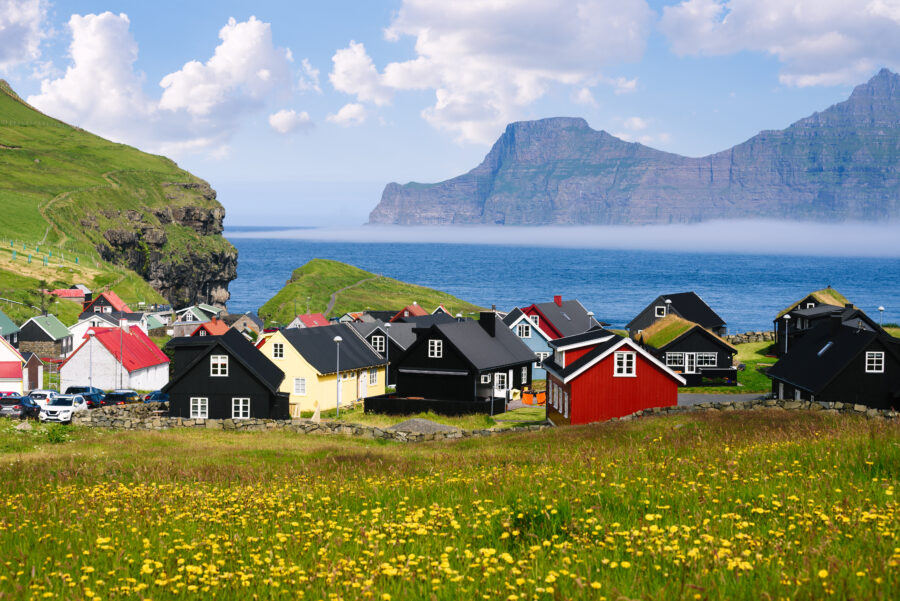
In Lofoten, those bright red rorbuer cabins perch right over the water. They started as simple fishermen’s huts, but now many are cozy guesthouses.
Stay in one and you’ll get a real feel for how locals lived during cod season. It’s rustic, simple, and surprisingly comfy.
The Faroe Islands feel more hidden, with turf-roofed houses that blend into the green hills. Walk through villages like Gjógv or Saksun and you’ll see grass-covered roofs that actually help insulate against the damp. It’s like stepping into another era, but these aren’t museum pieces—people still live in them.
Lofoten villages are bigger and more connected, thanks to ferries and roads. Faroese villages, by contrast, feel isolated, and honestly, that’s a big part of their charm. If you love quiet evenings and a slower pace, the Faroes might just win you over.
Culinary Specialties and Local Cuisine
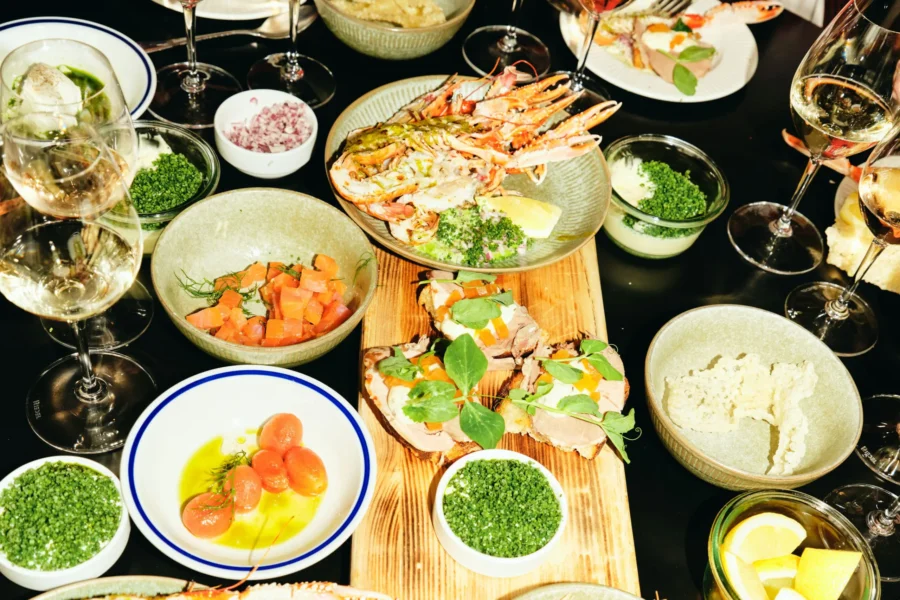
Food honestly says a lot about both places. In the Lofoten Islands, cod rules the table. The locals have been making stockfish—that air-dried cod—for centuries, and it’s still a staple.
You’ll spot Lofotlam on menus too, a slow-cooked lamb dish that’s just the thing for chilly evenings. Even the tiniest cafés serve up fish so fresh, you’d swear someone just hauled it in from the harbor.
The Faroe Islands? They really take preservation to the next level. Expect to see fermented lamb and dried fish everywhere.
It might sound odd at first, but these dishes are woven into the culture. Grab a meal in Tórshavn and you might come across whale or seabird on the menu—definitely not for everyone, and yeah, it’s controversial.
If you’re craving something more modern, Lofoten’s food scene is catching up fast. Chefs experiment with local ingredients and get pretty creative.
The Faroes, though, stick close to tradition, although Tórshavn does have a handful of contemporary spots. Either way, your meal is going to taste like the wild, rugged place you’re exploring.
Curious about Faroese cultural life? Here’s more. Want to dig into Lofoten’s heritage? This is a good start.
Travel Logistics and Practical Tips
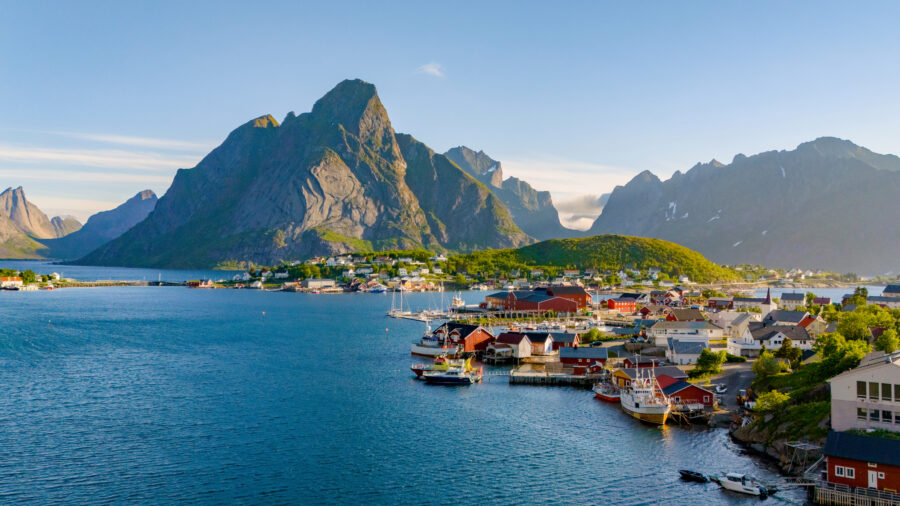
Getting to the Lofoten Islands or the Faroe Islands isn’t exactly a walk in the park. Both are remote, and the weather can be dramatic—ferries, flights, and roads might change on a whim. If you roll with flexible plans, pack the right gear, and set a realistic budget, you’ll thank yourself later.
Getting There and Around
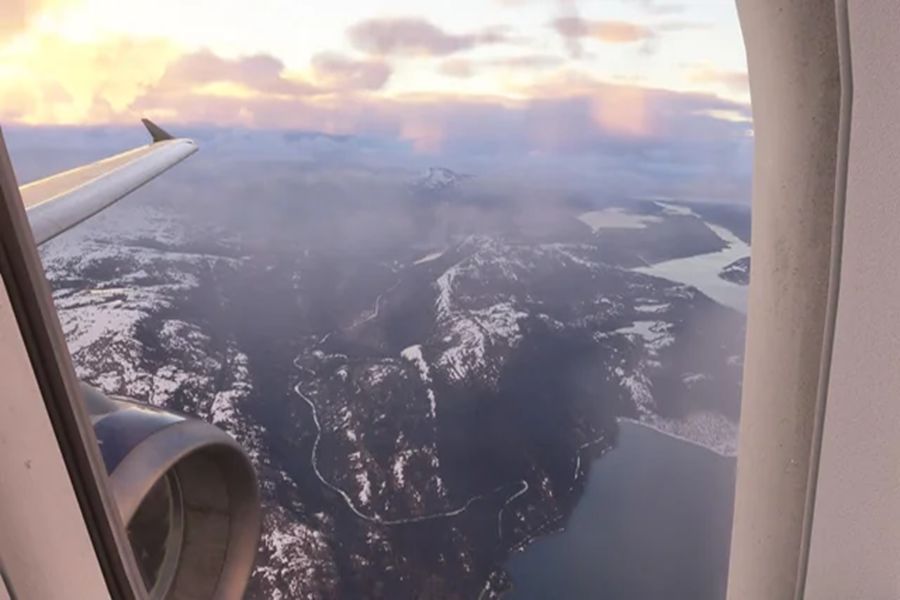
To reach the Lofoten Islands, you’ll probably fly into Bodø or Evenes first. From there, hop on a ferry, bus, or rent a car. The Bodø–Moskenes ferry is popular, but rough seas can cancel it without much warning.
If you’d rather skip the drama, driving via the Lofast road through Narvik takes longer but doesn’t get shut down by storms. The Faroe Islands are a bit more straightforward.
Atlantic Airways flies direct from Copenhagen and a few other hubs. Once you land, driving is the way to go.
Tunnels connect most islands, though you’ll pay a few tolls along the way. Public transport exists in both places, but buses aren’t exactly frequent.
If you want to reach trailheads or out-of-the-way villages, renting a car is almost non-negotiable. Don’t forget rain gear and travel gear that can handle whatever the sky throws at you—because it will.
Accommodation Options
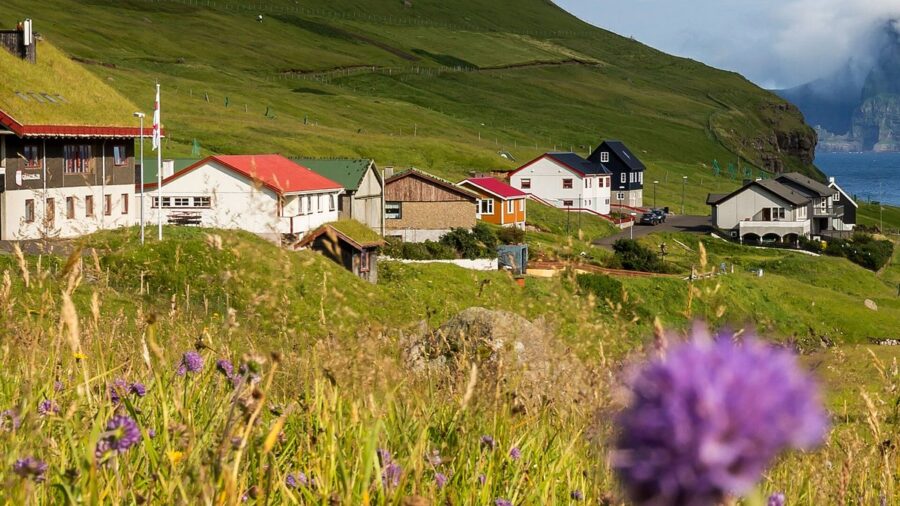
In Lofoten, everyone wants to stay in a rorbu—those iconic red fishermen’s cabins on stilts by the water. Lots have been updated with modern touches, but they keep their old-school charm.
If you’re coming in the summer, book way ahead. The midnight sun draws crowds.
The Faroe Islands lean more toward guesthouses, cozy hotels, and private rentals. Tórshavn has the most options, but staying in a tiny village feels a lot more authentic.
Don’t expect luxury resorts here; it’s all about comfort and practicality. Booking.com lists both regions, so you can mix things up. Personally, I like splitting time between a town base and a remote cabin—it just feels right.
Budget Considerations
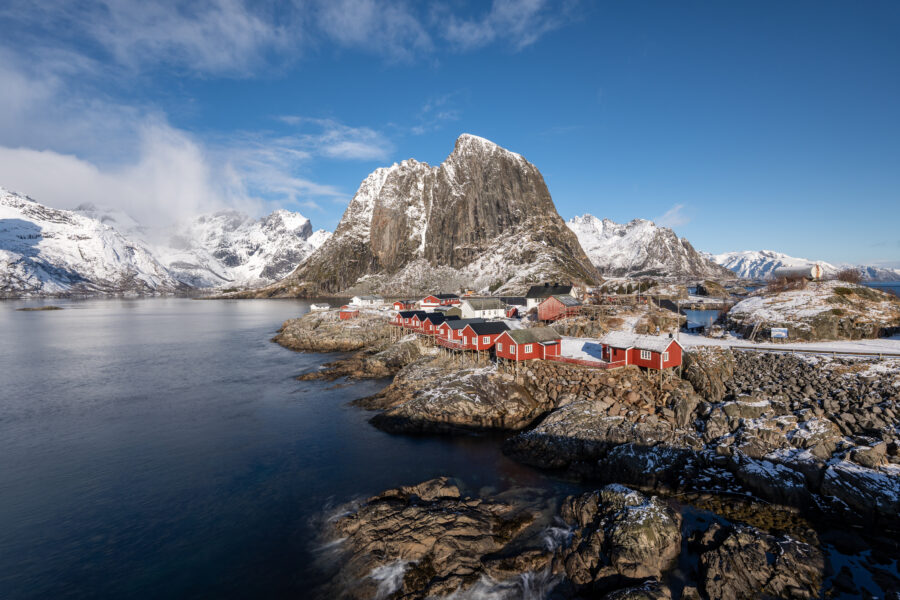
Let’s be real: neither place is cheap. Norway’s pricey, and Lofoten doesn’t buck the trend. Groceries and gas add up, and eating out is a treat, not a daily habit.
The Faroe Islands are a little easier on the wallet, but you’re still not in budget-travel territory. Save cash by cooking your own meals. Most cabins and guesthouses have kitchens, and the supermarkets are surprisingly well-stocked.
Renting a car will be one of your biggest expenses, but it’s worth it for the freedom. Flights aren’t cheap either. Compare prices on KAYAK or similar sites before you book.
And please, get travel insurance. It’s not exciting, but with ferries that get canceled and wild weather, it’s non-negotiable.
Which Destination is Right for You?
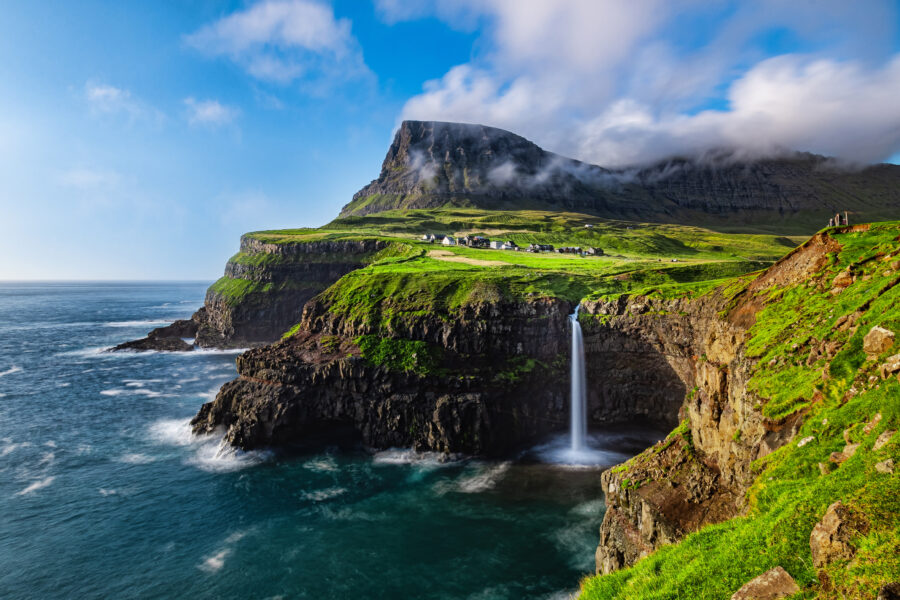
Choosing between the Lofoten Islands and the Faroe Islands really depends on what kind of trip you want—and when you go. Both are stunning, but they feel totally different once you’re actually there.
Ideal Traveler Profiles
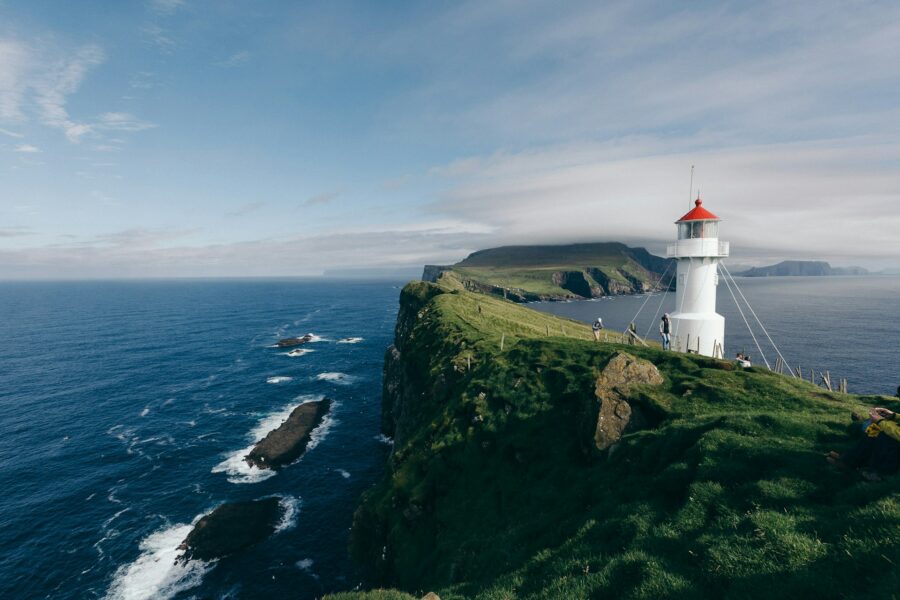
If you love jaw-dropping landscapes, the Lofoten Islands might be your jam. Mountains shoot straight out of the sea, fishing villages are tucked into little bays, and hiking trails are well-marked.
Getting around is easier here too. Ferries and buses connect most towns, so you won’t feel stuck if you skip the rental car.
The Faroe Islands pull in travelers who crave solitude and wildlife. Birdwatchers go nuts for the cliffs of Mykines, and the islands are so small you’re never far from puffins, sheep, or a windswept cliff. Nightlife is quieter, but you’ll find some surprisingly lively pubs in Tórshavn and even in towns like Klaksvík.
Honestly, if you want more restaurants, art, and a bit of a social scene, Lofoten wins. But if you’re okay trading convenience for raw, off-the-grid vibes, the Faroes are magic. It’s less polished, but that’s exactly the point.
Seasonal Highlights and Special Events
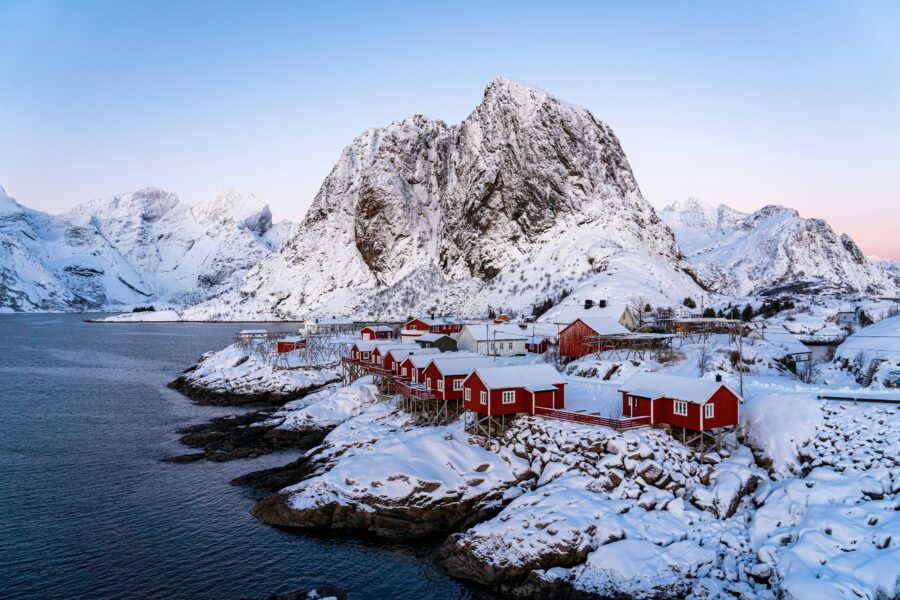
Timing is everything. In the Lofoten Islands, summer means endless daylight, great hiking, and calm seas for kayaking.
September is a sweet spot—you might catch the northern lights and still have decent weather. The Faroes get rainier late in the season, especially according to folks on Tripadvisor.
The Faroe Islands have their own beat. Summer is festival time—Ólavsøka in July turns Tórshavn into a parade of music and culture.
Birding’s best from May to August, but after that, the helicopter to Mykines stops running, so some famous bird cliffs become hard to reach.
Winter? Both places slow down, but Lofoten is better set up for northern lights chasers. Roads and infrastructure just make it easier to get around in the dark months. The Faroes in winter feel wild and stormy—perfect if you love dramatic seascapes, less so if you want smooth sailing.
Frequently Asked Questions
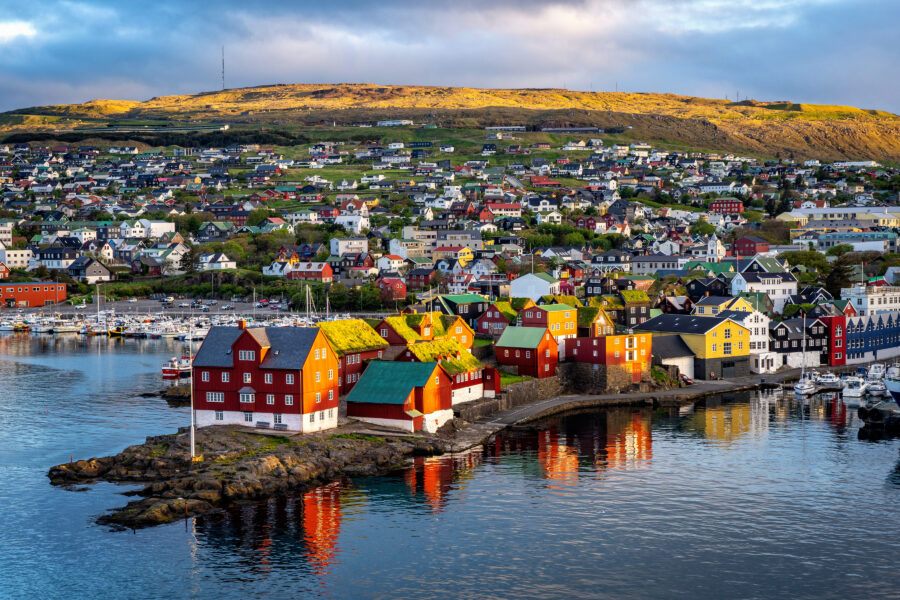
Travelers always ask about the landscapes, culture, and the nitty-gritty of getting around. Weather, food, wildlife, and logistics all shape the trip.
What unique experiences do the Lofoten Islands offer compared to the Faroe Islands?
In Lofoten, you can kayak through fjords, hike to white-sand beaches, and sleep in those classic rorbuer. The Faroe Islands? Think remote cliffs, puffin colonies, and turf-roofed villages that feel frozen in time.
I’ll never forget stumbling onto a Lofoten beach that looked tropical—except it was freezing. The Faroes just feel wilder and more cut off from the world.
How do the climates of the Lofoten and Faroe Islands differ, and what implications does this have for travel planning?
Lofoten usually gets better weather—clearer skies, which means a better shot at catching the northern lights in autumn.
The Faroe Islands are wetter and foggier, especially in late September. Rain is common, and places like Mykines can be tough to reach (Tripadvisor).
If you’re okay with wild, unpredictable weather, the Faroes can be magical. But if you want more daylight and clearer views, Lofoten’s the safer bet.
Can you highlight the cultural differences travelers should expect when visiting the Lofoten Islands versus the Faroe Islands?
Lofoten has a strong fishing heritage mixed with modern tourism. Norwegians are direct and friendly, and most people speak English.
The Faroes feel more insular, with deep Danish roots and traditions like chain dancing alive in the villages. Surprisingly, the Faroes have a lively pub culture for such a tiny place. In Lofoten, social life centers more around cafés and the outdoors.
What are the key considerations for wildlife enthusiasts when choosing between the Lofoten and Faroe Islands?
Birdwatchers, go to the Faroes—puffins and seabirds love those cliffs (Reddit). In Lofoten, you’ll spot sea eagles, whales, and plenty of marine life, but not the same bird colonies.
If birding is your main thing, the Faroes win. If you want whales and a mix of wildlife, Lofoten gives you more variety.
Could you elaborate on the accessibility and transportation options when traveling to the Lofoten Islands versus the Faroe Islands?
To get to Lofoten, fly into Bodø or Evenes and then drive or catch a ferry. Roads are good, and buses and ferries cover most places.
The Faroe Islands are mostly reached by flights from Copenhagen or Bergen. You’ll need a car to really see the islands (Tripadvisor).
Driving in the Faroes can be a little nerve-wracking—lots of single-lane tunnels. Lofoten’s roads are twisty, but honestly, they feel easier to navigate.
What are the culinary experiences that distinguish the Lofoten Islands from the Faroe Islands?
Lofoten serves up fresh cod, stockfish, and Arctic char. If you’re into seafood, honestly, you’ll probably think you’ve landed in paradise.
The Faroe Islands, on the other hand, push the envelope with their food culture—fermented lamb, dried fish, and all sorts of traditional dishes that might surprise you. Some of these flavors? They’re definitely an acquired taste.
I’ll admit it—Lofoten’s food felt a lot more approachable for me. Still, sampling those Faroese specialties turned into a pretty unforgettable adventure, even if I didn’t fall in love with every single bite.

